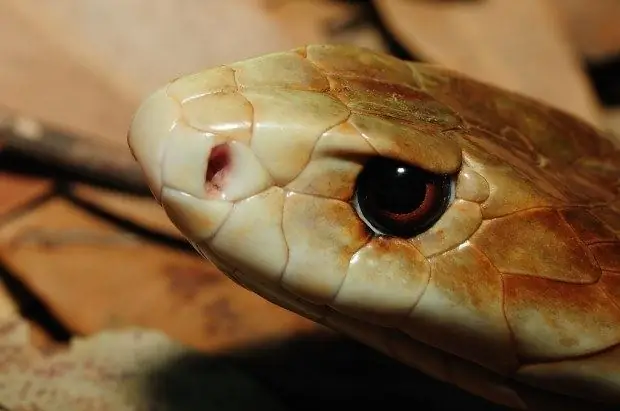The most dangerous land in the world is by no means the most poisonous, although the poison from its bite is enough to kill a hundred adults or 250,000 mice. Taipans living in northeastern Australia are recognized today as the most dangerous snakes on the planet.

Now there are three types of the taipan genus: the common (or coastal) taipan, the ferocious snake, and the taipan inland. It is the common taipan that is the most dangerous and aggressive snake, unlike its less cruel, but more venomous counterparts. The length of an adult taipan reaches 3-3.5 m, and the length of their teeth is 1 cm. The venom of taipans simultaneously has a paralyzing and coagulative (that is, preventing blood clotting) effect. Despite the fact that the antidote to the poison of these creatures has already been invented, a person bitten by a taipan is doomed: even if he survives, he will remain crippled, since the poison acts in a matter of seconds. Fortunately, meeting this terrible snake is not so easy, since it lives in sparsely populated areas, far from civilization. Taipans are most dangerous during mating and skin changes. Sensing danger, these snakes curl up and begin to vibrate with the tip of their tail. The history of the study of this snake is tragic. Due to the fact that it was almost impossible to catch them (and at the same time to avoid being bitten), until the second half of the 19th century, people did not have any reliable information and they had to rely on the stories of local residents, replete with superstitions and legends. The first scientific description of taipan was written only in 1867. After that, for 56 years, nothing new was learned. Meanwhile, at least 80 people died from the bites of this snake a year, and it was necessary to create an antidote. On June 27, 1950, a young Sydney amateur catcher, Kevin Budden, ventured out in search of Taipan. They were crowned with success, but the snake nevertheless bit the unfortunate in the left hand. Budden managed to pass the snake through his driver Jim to the staff of the Melbourne laboratory (Commonwealth Serum Laboratories) before dying of intoxication. Currently, insurance agencies refuse to provide their services to taipan catchers, but there are always enthusiasts, since their work is extremely highly paid.







